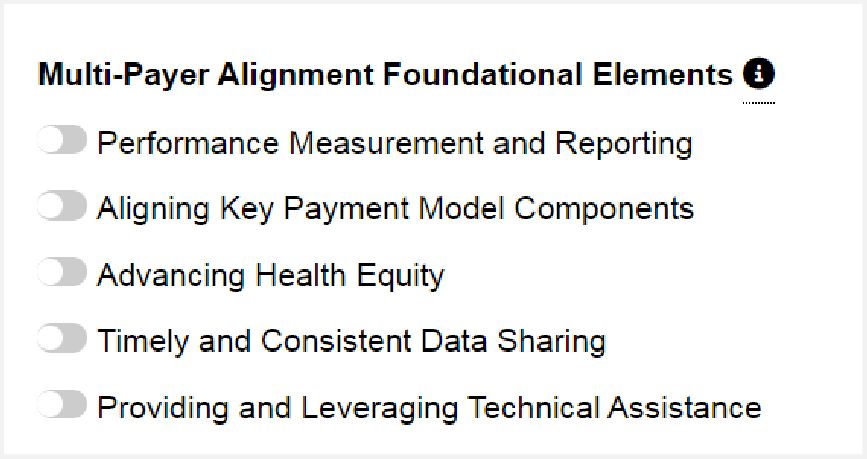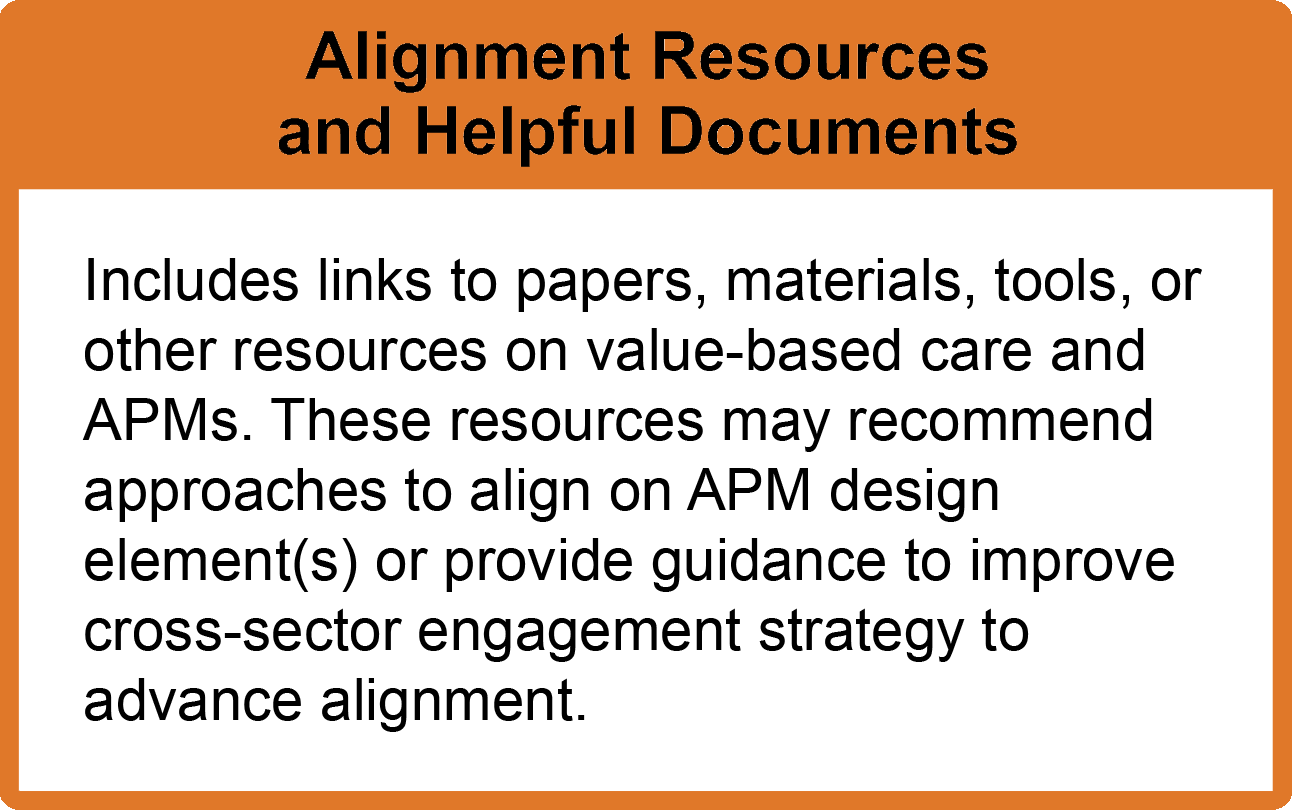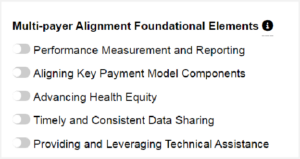CPAG Principles Approved
- April 26, 2016
- Posted by: Health Care Payment Learning & Action Network
- Category: LAN Update
Principles for Patient- and Family-Centered Payment

These principles, produced by the Consumer and Patient Affinity Group, are intended to help guide the development of new payment strategies. They provide guidance and aspirational direction to ensure that we address the needs and priorities of patients and families as we transition to value-based payment. The principles rest on the conviction that consumers, patients, and families are essential partners in every aspect of transforming health care and improving health.
Consumers, patients, families and their advocates should be collaboratively engaged in all aspects of design, implementation, and evaluation of payment and care models, and they should be engaged as partners in their own care.
The collaboration in design of payment and care models should include oversight, governance, and interface with the communities where care is delivered. At the point of care, patients and families should be engaged in ways that match their needs, capacities and preferences. Collaborative care should be aligned with patient goals, values and preferences (including language), and should reflect shared care planning and decision making throughout the care continuum.
Positive impact on patient care and health should be paramount.
The central consideration in all payment design should be improving patient health outcomes, experience of care, and health equity, while also ensuring the most effective use of health care resources.
Measures of performance and impact should be meaningful, actionable, and transparent to consumers, patients and family caregivers.
New payment models should be assessed using measures that are meaningful to patients and families. They should prioritize the use of measures derived from patient-generated data that address both care experience and outcomes. Measures should also address the full spectrum of care, care continuity and overall performance of specific models. Measures should be granular enough to enable patients to make informed decisions about providers and treatments.
Primary care services are foundational and must be effectively coordinated with all other aspects of care.
Payment models should foster this coordination, particularly between primary and specialty care, in order to promote: optimal coordination, communication and continuity of care; trusted relationships between clinicians and patients/families; concordance with patient goals, values and preferences; integration of non-clinical factors and community supports; and coordination of services delivered through non-traditional settings and modalities that meet patient needs. Effective delivery and coordination of primary care services should promote better care experience, optimal patient engagement, better health outcomes, and increased health equity.
Health equity and care for high-need populations must be improved.
New payment models should foster health equity, including access to innovative approaches to care and preventing any discrimination in care. They should collect data that allows for assessment of differential impacts and the identification and redress of disparities in health, health outcomes, care experience, access, and affordability.
Patient and family engagement and activation should be supported by technology.
New payment models should promote use of information technology that enables patients and their designated caregivers to easily access their health information in a meaningful format that enables them to use the information to better manage and coordinate their care. The technology should also enable patients to contribute information and communicate with their providers, and it should foster patient-clinician partnership in ongoing monitoring and management of health and care.
Financial incentives used in all models should be transparent and promote better quality as well as lower costs.
Financial incentives for providers and patients should be fully disclosed so that patients and consumers understand how new payment approaches differ from traditional fee-for-service models, and how certain incentives may impact the care providers recommend or provide. Financial incentives should be developed in partnership with patients and consumers in order to reflect how patients define value, and to reduce financial barriers to needed care and ensure that patients are not steered to lower cost care without regard for quality.
To learn more visit: https://hcp-lan.org/groups/consumer-patient-affinity-group-cpag/
Click here to download the principles.




















 Emily DuHamel Brower, M.B.A., is senior vice president of clinical integration and physician services for Trinity Health. Emphasizing clinical integration and payment model transformation, Ms. Brower provides strategic direction related to the evolving accountable healthcare environment with strong results. Her team is currently accountable for $10.4B of medical expense for 1.6M lives in Medicare Accountable Care Organizations (ACOs), Medicare Advantage, and Medicaid and Commercial Alternative Payment Models.
Emily DuHamel Brower, M.B.A., is senior vice president of clinical integration and physician services for Trinity Health. Emphasizing clinical integration and payment model transformation, Ms. Brower provides strategic direction related to the evolving accountable healthcare environment with strong results. Her team is currently accountable for $10.4B of medical expense for 1.6M lives in Medicare Accountable Care Organizations (ACOs), Medicare Advantage, and Medicaid and Commercial Alternative Payment Models. Mr. James Sinkoff is the Deputy Executive Officer and Chief Financial Officer for Sun River Health (formerly known as Hudson River HealthCare), and the Chief Executive Officer of Solutions 4 Community Health (S4CH); an MSO serving FQHCs and private physician practices.
Mr. James Sinkoff is the Deputy Executive Officer and Chief Financial Officer for Sun River Health (formerly known as Hudson River HealthCare), and the Chief Executive Officer of Solutions 4 Community Health (S4CH); an MSO serving FQHCs and private physician practices. Victor is the Chief Medical Officer for TennCare, Tennessee’s Medicaid Agency. At TennCare, Victor leads the medical office to ensure quality and effective delivery of medical, pharmacy, and dental services to its members. He also leads TennCare’s opioid epidemic strategy, social determinants of health, and practice transformation initiatives across the agency. Prior to joining TennCare, Victor worked at Evolent Health supporting value-based population health care delivery. In 2013, Victor served as a White House Fellow to the Secretary of Health and Human Services. Victor completed his Internal Medicine Residency at Emory University still practices clinically as an internist in the Veteran’s Affairs Health System.
Victor is the Chief Medical Officer for TennCare, Tennessee’s Medicaid Agency. At TennCare, Victor leads the medical office to ensure quality and effective delivery of medical, pharmacy, and dental services to its members. He also leads TennCare’s opioid epidemic strategy, social determinants of health, and practice transformation initiatives across the agency. Prior to joining TennCare, Victor worked at Evolent Health supporting value-based population health care delivery. In 2013, Victor served as a White House Fellow to the Secretary of Health and Human Services. Victor completed his Internal Medicine Residency at Emory University still practices clinically as an internist in the Veteran’s Affairs Health System. Dr. Brandon G. Wilson, DrPH, MHA (he, him, his) joined Community Catalyst as the Director of the Center for Consumer Engagement in Health Innovation, where he leads the Center in bringing the community’s experience to the forefront of health systems transformation and health reform efforts, in order to deliver better care, better value and better health for every community, particularly vulnerable and historically underserved populations. The Center works directly with community advocates around the country to increase the skills and power they have to establish an effective voice at all levels of the health care system. The Center collaborates with innovative health plans, hospitals and providers to incorporate communities and their lived experience into the design of systems of care. The Center also works with state and federal policymakers to spur change that makes the health system more responsive to communities. And it provides consulting services to health plans, provider groups and other health care organizations to help them create meaningful structures for engagement with their communities.
Dr. Brandon G. Wilson, DrPH, MHA (he, him, his) joined Community Catalyst as the Director of the Center for Consumer Engagement in Health Innovation, where he leads the Center in bringing the community’s experience to the forefront of health systems transformation and health reform efforts, in order to deliver better care, better value and better health for every community, particularly vulnerable and historically underserved populations. The Center works directly with community advocates around the country to increase the skills and power they have to establish an effective voice at all levels of the health care system. The Center collaborates with innovative health plans, hospitals and providers to incorporate communities and their lived experience into the design of systems of care. The Center also works with state and federal policymakers to spur change that makes the health system more responsive to communities. And it provides consulting services to health plans, provider groups and other health care organizations to help them create meaningful structures for engagement with their communities. Tamara Ward is the SVP of Insurance Business Operations at Oscar Health, where she leads the National Network Contracting Strategy and Market Expansion & Readiness. Prior to Oscar she served as VP of Managed Care & Network Operations at TriHealth in Southwest Ohio. With over 15 years of progressive health care experience, she has been instrumental driving collaborative payer provider strategies, improving insurance operations, and building high value networks through her various roles with UHC and other large provider health systems. Her breadth and depth of experience and interest-based approach has allowed her to have success solving some of the most complex issues our industry faces today. Tam is passionate about driving change for marginalized communities, developing Oscar’s Culturally Competent Care Program- reducing healthcare disparities and improving access for the underserved population. Tamara holds a B.A. from the University of Cincinnati’s and M.B.A from Miami University.
Tamara Ward is the SVP of Insurance Business Operations at Oscar Health, where she leads the National Network Contracting Strategy and Market Expansion & Readiness. Prior to Oscar she served as VP of Managed Care & Network Operations at TriHealth in Southwest Ohio. With over 15 years of progressive health care experience, she has been instrumental driving collaborative payer provider strategies, improving insurance operations, and building high value networks through her various roles with UHC and other large provider health systems. Her breadth and depth of experience and interest-based approach has allowed her to have success solving some of the most complex issues our industry faces today. Tam is passionate about driving change for marginalized communities, developing Oscar’s Culturally Competent Care Program- reducing healthcare disparities and improving access for the underserved population. Tamara holds a B.A. from the University of Cincinnati’s and M.B.A from Miami University.


 Dr. Peter Walsh joined the Colorado Department of Health Care Policy and Financing as the Chief Medical Officer on December 1, 2020. Prior to joining HCPF, Dr. Walsh served as a Hospital Field Representative/Surveyor at the Joint Commission, headquartered in Oakbrook Terrace, Illinois.
Dr. Peter Walsh joined the Colorado Department of Health Care Policy and Financing as the Chief Medical Officer on December 1, 2020. Prior to joining HCPF, Dr. Walsh served as a Hospital Field Representative/Surveyor at the Joint Commission, headquartered in Oakbrook Terrace, Illinois.









